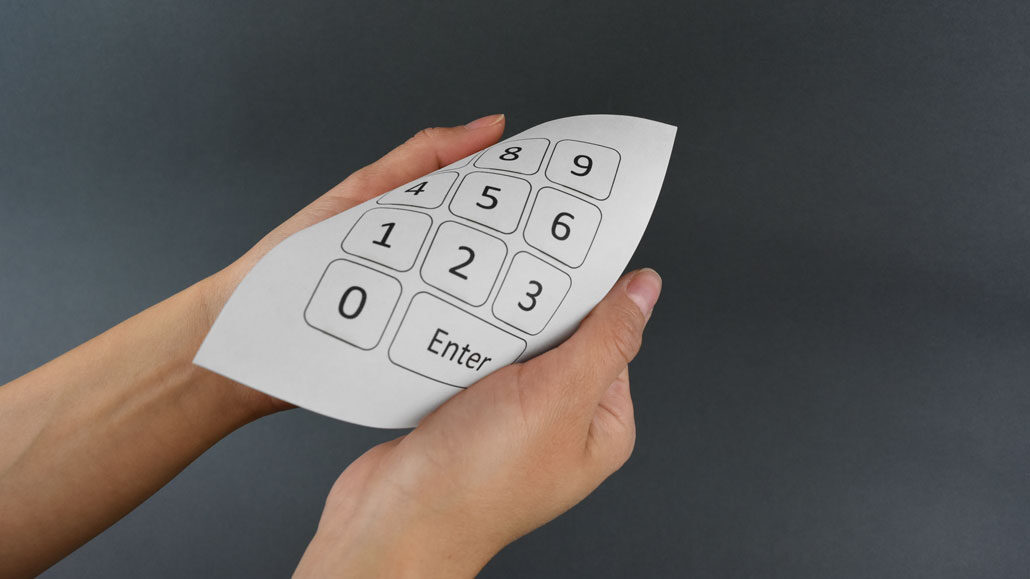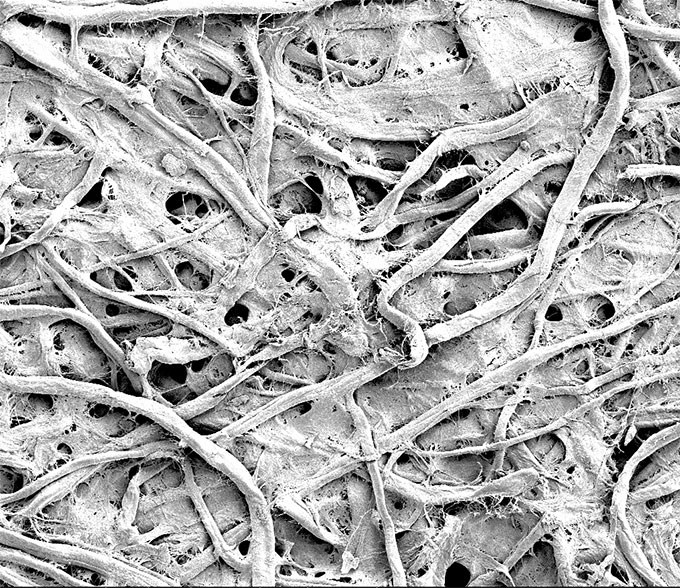Ordinary paper turns into flexible human-powered keypad
Tapping fingers power the device, which works even after folding or a spray of water

If you had a device made out of the new electronic paper, you could fold it up, stick it in your pocket, and take it to the beach. It resists sand and water and it’s “cheap and easy to replace,” says Sala de Medeiros.
Purdue University
Smartphones, tablets, fitness trackers, headphones. Most of the electronic devices we use today are made of rigid metal, plastic and glass. But electronics don’t have to be, says Marina Sala de Medeiros. Consider her team’s new electronic keypad. It has no batteries. The user’s touch gives it all the power it needs to run.
“Any electronics you have — just think if you could make that out of paper,” she says. Paper is cheap and plentiful. It’s also flexible and lightweight.
Sala de Medeiros is an engineer at Purdue University in West Lafayette, Ind. She and her colleagues found a way to turn an ordinary sheet of paper into a simple electronic keypad. Many teams around the world are working on paper-based electronics. But this new device is the first to power itself and also repel water and dust.
The researchers described this new invention in the December 2020 issue of Nano Energy.

No single moment inspired her paper keypad, Sala de Medeiros says. Instead, she focused on devices other engineers have been working on. Then she asked herself, “What are the gaps? What can I overcome?”
High cost was a problem with some flexible electronics. So she decided to work with low-cost materials. That would make it easier to eventually turn her idea into something most people could afford. She recalls also wanting something that felt like regular paper, but wouldn’t easily get wet or dirty. It also should “fit in your pocket,” she says.
Teflon is a chemical coating that keeps food from sticking to pots and pans. Similar compounds can also make paper waterproof. So she started testing some of these so-called perfluorinated (Pur-FLOOR-ih-nay-tid) chemicals.
Strangely, the one that was supposed to do the best job didn’t work at all. When she sprayed paper with it, water still soaked through. What went wrong?
After some research, Sala de Medeiros found out that this chemical reacts with air. “As soon as I opened the vial, I killed the chemical,” she realized.
She had to buy more of the chemical — and special equipment that would let her use it without any pesky air getting in the way. Now, the chemical works as planned. After getting sprayed, paper still feels like paper. But water beads up on its surface instead of soaking through.
Success!
Power from your fingertips
The next step was to add an electronic circuit. The team placed a stencil with the shape of a circuit onto the back of the paper. Then they sprayed on several layers of materials. Two layers contained tiny nickel particles. These act like wires to carry electricity through the circuit. The final layer is another coating of the Teflon-like chemical. Finally, the team flipped the paper over and printed a keypad of numbers on the other side. They also added a tiny Bluetooth chip. This let their paper device talk to a computer.
The circuit needs a source of electricity. That comes from the tap of a finger. “When you’re typing we can use the energy,” says Sala de Medeiros. Such triboelectric (Try-boh-ee-LEK-trik) energy comes from the friction of two things touching or rubbing. (You can generate this type of static electricity yourself. Just walk across a fuzzy rug with socks on. You’ll probably build up enough electric charge to feel a zap when you later touch a doorknob or some other person.)
In the new keypad, the pressure of a finger tap rubs together the layers of material sprayed onto the paper. This generates a small amount of power, usually around 20 volts. That sends electricity along the printed wires to the Bluetooth chip. The chip then signals a computer, telling it which number the person had pressed. That number now shows up on the computer’s monitor.
The voltage the device generates from a finger tap isn’t a lot, says Manos M. Tentzeris. An electrical engineer at Georgia Institute of Technology in Atlanta, he did not take part in the research. “For simple structures like a keyboard,” he observes, “it’s more than enough.” But for a more power-hungry device, such as a movie player, it would be nowhere near enough.
A Harry Potter world
In fact, many useful devices don’t require lots of power. Sala de Medeiros’ team also printed a controller for a music player. Tapping arrows switches between songs. Sliding a finger along a printed bar turns the volume up or down. The music plays from a computer, not the paper.

In the near future, such paper electronics will be most useful as sensors. For example, a simple sensor printed onto money could help prevent counterfeiting. Sensors printed on packages of food or medication could detect if the product got too hot or too cold and was no longer safe to use.
Eventually, though, this type of innovation could lead to “paper that is actually interactive, like in Harry Potter,” says Tse Nga Ng. She’s an engineer at the University of California, San Diego who was not involved in the new research. (In the Harry Potter books, pictures in newspapers or photographs hanging on the wall move around and talk.) Someday, people may even be able to print their own paper tablets or music players.
This is one in a series presenting news on invention and innovation, made possible with generous support from the Lemelson Foundation.







